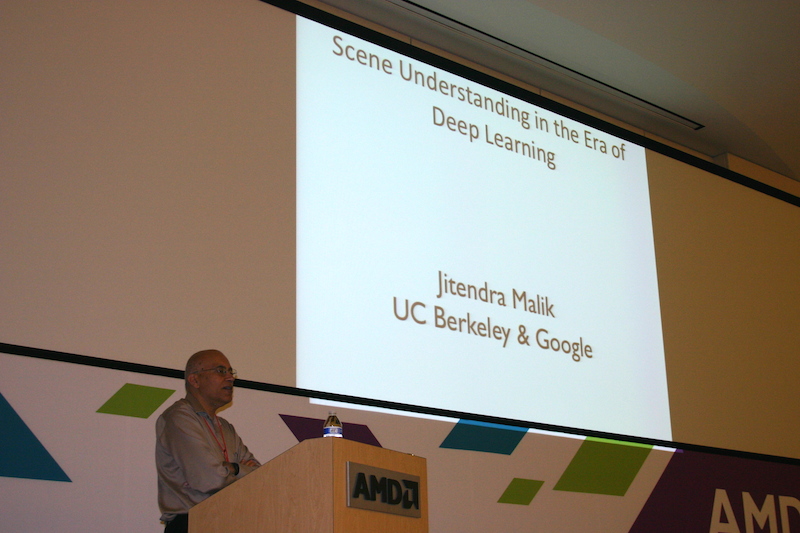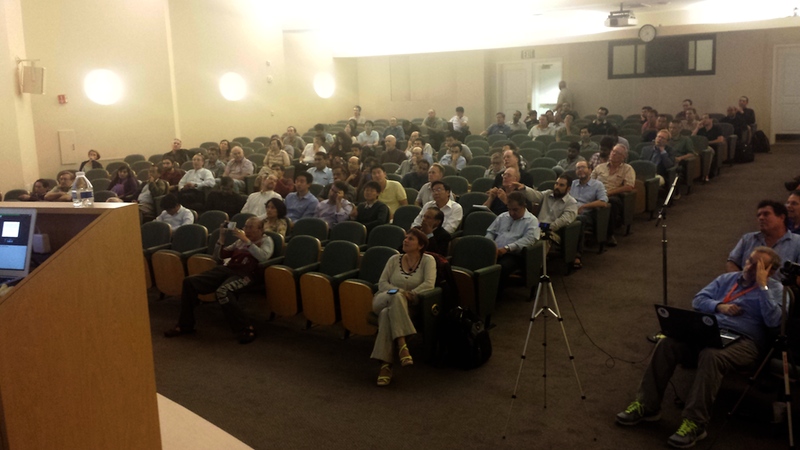|
|
Click here for see the full list of upcoming events.
Wednesday, Aug 19, 2015
Scene Understanding in the Era of Deep Learning
This meeting is hosted/sponsored by IEEE SPS Chapter and co-sponsored by IEEE ITS & CS Chapters
Speaker :
Dr. Jitendra Malik
Prof. Dept. of EECS, University of California, Berkeley
Location:
AMD Commons Theater, 991 Stewart Dr., Sunnyvale, CA (map or Google Maps)
Schedule:
6:30pm: Networking/Light Dinner
7:00pm: Announcements
7:05pm: Presentation
8:15pm: Adjourn
Cost:
Free. Donation accepted for food.
Abstract:
Multilayer neural networks trained with stochastic gradient descent on large labeled datasets have recently been shown to be remarkably good features for computer vision. This is the fourth generation of features in the fifty year history of the field, starting with edges and corners (1960s-1990s), linear filters such as Gaussian derivatives, Gabors, Haar wavelets (1990s), and orientation histograms such as SIFT and HOG (2000s). However, it is not the case that the field has to be reinvented with each new generation of features. Insights from the past of computer vision, and the even longer tradition in human visual perception, retain relevance across these choices. For example, I have been arguing for some time now about the importance of the interaction between recognition, reconstruction and re-organization. In this view, recognition ofobjects is reciprocally linked to re-organization, with bottom-up grouping processes generating candidates, which can be classified using top down knowledge, following which the segmentations can be refined again. Recognition of 3D objects could benefit from a reconstruction of 3D structure, and 3D reconstruction can benefit from object category-specific priors. I will show results on several such problems in my talk, typically using features derived from "deep learning". The work was done in collaboration with various students and postdocs at Berkeley, and almost all the papers have been posted on arXiv, in case you are interested in more details.
Biography:
Jitendra Malik was born in Mathura, India in 1960. He received the B.Tech degree in Electrical Engineering from Indian Institute of Technology, Kanpur in 1980 and the PhD degree in Computer Science from Stanford University in 1985. In January 1986, he joined the university of California at Berkeley, where he is currently the Arthur J. Chick Professor in the Computer Science Division, Department of Electrical Engg and Computer Sciences. He is also on the faculty of the department of Bioengineering, and the Cognitive Science and Vision Science groups. During 2002-2004 he served as the Chair of the Computer Science Division and during 2004-2006 as the Department Chair of EECS.
Prof. Malik's research group has worked on many different topics in computer vision, computational modeling of human vision, computer graphics and the analysis of biological images. Several well-known concepts and algorithms arose in this research, such as anisotropic diffusion, normalized cuts, high dynamic range imaging, and shape contexts. He has mentored more than 50 PhD students and postdoctoral fellows.
He received the gold medal for the best graduating student in Electrical Engineering from IIT Kanpur in 1980 and a Presidential Young Investigator Award in 1989. At UC Berkeley, he was selected for the Diane S. McEntyre Award for Excellence in Teaching in 2000, a Miller Research Professorship in 2001, and appointed to be the Arthur J. Chick Professor in 2002. He received the Distinguished Alumnus Award from IIT Kanpur in 2008. He was awarded the Longuet-Higgins Prize for a contribution that has stood the test of time twice, in 2007 and in 2008. He received the PAMI-TC Distinguished Researcher in Computer Vision Award in 2013, and in 2014 the K.S. Fu Prize from the International Association of Pattern Recognition. He is a fellow of the IEEE and the ACM. He is a member of the National Academy of Engineering, a fellow of the American Academy of Arts and Sciences and in 2015 was elected to the National Academy of Sciences.
Talk Slides
Photos



* from-left: John Princen, Radhakrishna Giduthuri, Jitendra Malik, Iole Moccagatta, and Pavel Tcherniaev
Subscribe to future announcements: link
|